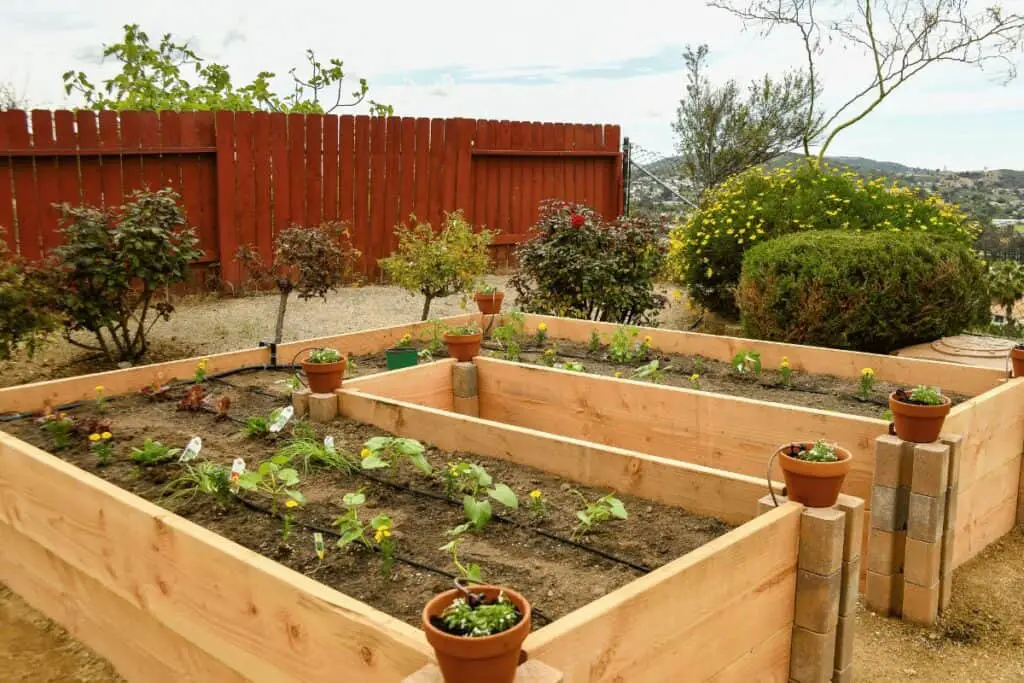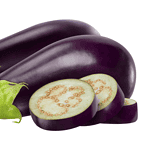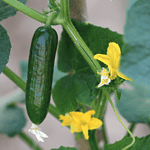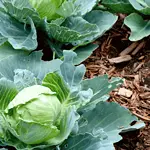Raised garden beds are a great way to improve the drainage, aeration, and overall health of your garden. They also make it easier to control the soil quality and prevent weeds from taking over. Here is a step-by-step guide on how to fill raised garden beds for the perfect garden.
Explanation of How to Fill Raised Garden Beds for The Perfect Garden
Raised garden beds are gardening structures that are elevated above ground level. They are often made from wood, concrete blocks, bricks, or other sturdy materials. The main purpose of raised garden beds is to provide better soil conditions for plants to grow. Because the soil in raised beds is not compacted as it can be in traditional gardens, the soil has better drainage and aeration, which can lead to healthier plants.
Importance of Proper Bed Filling
Properly filling raised garden beds is crucial for the health and growth of plants. There are several reasons why proper bed filling is important:
Soil quality: The soil in raised beds should be a mixture of different types of soil, such as topsoil, compost, and peat moss. This will ensure that the soil is loose, rich in organic matter, and well-draining, which are all essential for healthy plant growth.
Drainage: Properly filling the raised bed with the right soil mixture can also help to improve drainage. Raised beds are designed to have good drainage, but if the soil is not filled properly, the bed may become waterlogged, which can lead to root rot and other issues.
Nutrient availability: The soil in raised beds can be amended with fertilizers and other nutrients to ensure that plants have access to the necessary nutrients for growth.
Weed prevention: By filling the raised bed with good-quality soil, the gardener can prevent weeds from growing in the bed. This will make it easier to keep the bed free of weeds and prevent them from competing with the plants for nutrients and water.
Pest prevention: Properly filled raised beds can also help to prevent pests and diseases from affecting the plants. This can be achieved by using clean soil and avoiding the use of soil that may have been previously used for growing plants that are prone to pests and diseases.
Overall, properly filling raised garden beds is essential for achieving healthy, productive gardens that are free of pests, diseases, and weeds, and that provide optimal growing conditions for plants.

Explanation of Different Types of Soil
Topsoil: Topsoil is the top layer of soil that is rich in organic matter and nutrients. It is the layer of soil where a plant’s roots grow, and it is composed of a mixture of different types of soil particles, such as sand, silt, and clay. Topsoil is a good option for filling raised beds because it is rich in nutrients and can provide good drainage.
Potting soil: Potting soil is a type of soil that is specifically formulated for use in container gardening and indoor plants. It is typically made from a mixture of peat moss, vermiculite, perlite, and other organic materials. Potting soil is lightweight and well-draining, making it a good option for raised beds.
Compost: Compost is a type of organic matter that is made from decomposed plant material, such as leaves, grass clippings, and kitchen scraps. It is rich in nutrients and can help to improve the quality of the soil. Compost can be added to the soil in raised beds to improve the soil’s fertility and structure. It is also a good source of organic matter and can improve the soil’s ability to retain moisture.
Overall, different types of soil can be used to fill raised beds, but it is important to use a combination of soil types that will provide the best growing conditions for plants. A combination of topsoil, potting soil, and compost can provide the right balance of drainage, fertility, and structure for the plants to thrive.
Explanation of Amendments
Organic matter: Organic matter, such as compost, peat moss, and well-rotted manure, can be added to the soil in raised beds to improve its structure and fertility. Organic matter helps to improve soil drainage, water-holding capacity, and nutrient availability. It also helps to promote healthy microbial activity in the soil, which can be beneficial for plant growth.
Fertilizers: Fertilizers are substances that are added to the soil to provide plants with the necessary nutrients for growth. Different types of fertilizers provide different types of nutrients, such as nitrogen, phosphorus, and potassium. Fertilizers can be added to the soil in raised beds to ensure that plants have access to the necessary nutrients for growth.
pH balancers: Soil pH is a measure of the acidity or alkalinity of the soil. Different plants have different pH preferences, and some plants may not grow well in soil that is too acidic or too alkaline. pH balancers, such as lime and sulfur, can be added to the soil in raised beds to adjust the pH to a level that is suitable for the plants being grown.
Overall, amendments are substances that are added to the soil to improve its structure and fertility and to ensure that plants have access to the necessary nutrients for growth. Organic matter, fertilizers, and pH balancers are all examples of amendments that can be added to the soil in raised beds to improve the growing conditions for plants.
Preparing the Bed

Removing existing vegetation: Before filling the raised bed, it’s important to remove any existing vegetation, such as grass or weeds, from the area. This can be done by manually digging up the plants or by using a weed killer. Removing existing vegetation is important because it prevents the plants from competing with the new plants for nutrients and water.
Leveling the ground: After removing existing vegetation, the ground should be leveled to ensure that the raised bed is even and stable. This can be done with a rake or a hoe to remove any bumps or dips in the ground. A level bed will ensure that water and nutrients are distributed evenly throughout the bed and that the plants are growing at the same level.
Adding borders or edging: To give the raised bed a finished look and to keep the soil and plants contained, borders or edging can be added around the perimeter of the bed. Borders can be made from wood, concrete blocks, bricks, or other materials. Edging can also help keep grass and weeds from encroaching on the bed and make it easier to maintain the bed.
Overall, preparing the bed for filling is an important step in creating a successful raised garden bed. Removing existing vegetation, leveling the ground, and adding borders or edging will help ensure that the bed is stable, even, and easy to maintain. It will also help prevent weeds and grass from encroaching on the bed and will provide a neat and tidy appearance.
Choosing the Right Location for Your Bed
Choosing the right location for your raised garden bed is an important step in ensuring that your plants will thrive. Factors to consider when choosing a location include:
- Sunlight: Most plants need at least six hours of direct sunlight per day, so make sure the location you choose gets plenty of sun.
- Drainage: raised beds should be placed in an area that has good drainage. Poor drainage can lead to waterlogged soil and root rot.
- Accessibility: The raised bed should be placed in an area that is easily accessible for planting, watering, and maintenance.
Filling the Bed & Layering the Soil
Once you have chosen the location for your raised bed and prepared the ground, it is time to start filling it with soil and amendments. Start by adding a layer of topsoil, followed by a layer of organic matter, such as compost or well-rotted manure. Repeat this layering process until the bed is filled to the desired level.
Mixing and incorporating
After layering the soil and amendments, it is important to mix them together thoroughly to ensure that they are well incorporated. This can be done with a shovel or a garden fork. Mixing the soil and amendments will ensure that they are evenly distributed throughout the bed and that the plants have access to all the nutrients they need.
Adding fertilizer or other nutrients
Once the bed is filled and the soil and amendments are well-incorporated, you can add any additional fertilizers or nutrients that are needed. This can be done by spreading granular fertilizers on top of the soil or by adding liquid fertilizer to the water when you water the bed. It’s important to follow the instructions on the fertilizer package and not to over-fertilize.
Overall, filling the raised bed with the right mixture of soil, amendments, and nutrients is crucial for a successful garden. Choosing the right location, layering the soil, mixing and incorporating and adding fertilizers or other nutrients are important steps to ensure that the plants in your raised bed will thrive.
Watering and Compacting the Soil
After filling the raised bed, it’s important to water the soil thoroughly to help it settle and compact. This will help to eliminate any air pockets in the soil, which can lead to dry spots and uneven watering. It’s best to use a soaker hose or a watering can to slowly apply water to the bed to avoid erosion. Once the soil is wet, you can use a tamper or your foot to gently compact the soil. This will help to ensure that the soil is in good contact with the roots of the plants and will also help to prevent erosion.
Maintenance and Care
Watering and Irrigation
Watering is one of the most important aspects of maintaining a raised garden bed. Proper watering will ensure that the plants have enough water to grow and thrive. It’s important to water the bed deeply and infrequently, rather than light and often. This will encourage the roots to grow deeper into the soil, which will make the plants more drought-tolerant.
Weed Control
Weeds can be a major problem in raised garden beds. To control weeds, it’s important to keep the bed free of debris, mulch around the plants, and pull weeds by hand as soon as they appear. You can also use a weed barrier cloth or landscape fabric to help prevent weeds from growing.
Regular Soil Testing
To ensure that the plants in your raised bed have all the nutrients they need to thrive, it’s important to test the soil regularly. This can be done with a home soil test kit or by sending a sample of soil to a lab for testing. Once you know what nutrients your soil is lacking, you can add the appropriate amendments to bring the soil into balance.
Adding Compost or Other Organic Matter

Adding compost or other organic matter to your raised bed on a regular basis will help to improve the fertility of the soil and will also help to improve the structure of the soil. This can be done by spreading a layer of compost on top of the soil and then working it into the soil with a fork.
Overall, maintaining and caring for a raised garden bed is essential for the success of the garden. Proper watering, weed control, regular soil testing, and adding compost or other organic matter are all important aspects of maintaining a raised garden bed. By following these steps, you can ensure that your raised garden bed is healthy and productive.
Pest and Disease Management
Pests and diseases can cause serious damage to plants in a raised garden bed. To prevent and manage pests and diseases, it’s important to:
- Keep the bed clean and free of debris: This will help to reduce the number of pests and diseases that can live in the bed.
- Practice crop rotation: This will help to reduce the buildup of pests and diseases in the soil.
- Use natural pest control methods: Such as companion planting, using beneficial insects, and using traps and barriers.
- Inspect plants regularly: Look for signs of pests or diseases, such as holes in leaves, discoloration, or wilting.
- Use appropriate pesticides and fungicides: If necessary, use appropriate pesticides and fungicides to control pests and diseases. Be sure to follow the instructions on the label and use the least toxic option.
- Keep an eye out for common pests and diseases: in your area, and take steps to prevent them.
By following these steps, you can help to reduce the risk of pests and diseases in your raised garden bed and ensure that your plants are healthy and productive.
According to a survey by the National Gardening Association, 35% of American households who gardened in 2020 had a raised bed in their garden.
Additional Resources
https://www.gardenweb.com/raised-beds/
https://www.almanac.com/video/how-lay-out-vegetable-garden
https://www.almanac.com/content/how-build-raised-garden-bed
Conclusion
Raised garden beds are a great way to grow a wide variety of plants in a small space. They offer many benefits such as improved drainage, better soil control, and reduced weeds and pests. However, to get the most out of your raised bed, it is important to properly prepare the bed, fill it with the right mix of soil and amendments, and maintain it with regular watering, soil testing, and pest and disease management. By following the steps, in this article on How to Fill Raised Garden Beds for The Perfect Garden, you can create a beautiful and productive raised garden bed that will provide you with fresh fruits, vegetables, and herbs.
FAQ’S
What Is the Best Soil to Use for Filling a Raised Bed?
The best soil for filling a raised bed will depend on your specific gardening needs, but a mixture of topsoil, compost, and other organic matter is often recommended. This will provide a good balance of nutrients and structure for your plants.
How Deep Should I Fill My Raised Bed?
The depth of the soil in your raised bed will depend on the plants you plan to grow, but a general rule of thumb is to fill the bed to a depth of at least 8 inches.
Can I Just Use Compost to Fill My Raised Bed?
While compost can be a great addition to your raised bed, it’s important to also use soil that has the necessary nutrients and structure for your plants. A mix of soil and compost can provide the best balance of nutrients and structure for your plants.
Can I Use Old Soil from My Garden to Fill My Raised Bed?
Old soil from your garden can be used to fill a raised bed, but it’s important to make sure that it is free of any disease or weed seeds. It’s a good idea to mix it with fresh soil and compost for the best results.
Do I Need to Add Fertilizer when Filling My Raised Bed?
It depends on the soil and plants you plan to use. If you are using soil and compost that is rich in nutrients, you may not need to add additional fertilizer. However, if your soil is lacking in nutrients, you may need to add fertilizer to ensure that your plants have the necessary nutrients to grow.
Latest Posts
- How to Plant Lettuce Seeds for Maximum Germination

- How to Plant Kale Seeds: A Step-by-Step Guide to Maximum Germination Success!

- How to Plant Eggplant Seeds: A Step-by-Step Guide to Maximum Germination Success!

- How to Plant Cucumber Seeds for Maximum Germination

- How to Plant Chili Pepper Seeds for Maximum Germination

- How to Plant Cabbage Seeds for Maximum Germination





